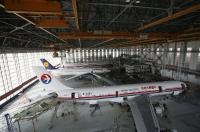
Get a glimpse of ST Engineering's big strategic plans
New target markets are the focus.
According to Nomura, the group engages in five-year strategic planning, which allows it to think ahead of the curve.
Here's more:
According to management, the broad strategic direction for the group is to bring existing products/services to new markets and to develop new product adjacencies/capabilities so as to capture a greater share of the value chain and wallet share of clients.
Exporting iDirect sitcom products beyond the US into new markets is an example of how STE is trying to scale existing businesses into new markets.
Separately, the new engine wash service is a good example of how the group has developed new complementary capabilities to help to capture a larger wallet share. The addition of new capabilities allows the group to package and customise solutions to meet clients’ needs.
Though unstated, we believe there has been a quasi cradle-to-grave approach, in line with the direction of securing incremental share of the value chain. For instance, its new engine leasing business allows the group to generate a new revenue stream.
And, by providing the engines, it further allows STE to secure maintenance work across the engine lifecycle. On top of that, the group could extract incremental residual value by parting down the engines at the end of their engine life, which would typically allow the group to realise value in excess to the engine’s depreciated value on its book.
For instance, the group has developed new capabilities such as interior refurbishment which will allow it to generate more work during the A & B check phases of the aircraft.
This is in reaction to the shift towards a younger aircraft fleet, which would require more A & B checks rather than the heavy C & D checks. Again, in response to a younger fleet, additional maintenance capacity will be placed closer to airports to allow for shorter turnaround time, which the airlines demand during the lighter A & B checks.
Newer maintenance capacity will also be larger to accommodate new plane types (eg, A380).
























 Advertise
Advertise






